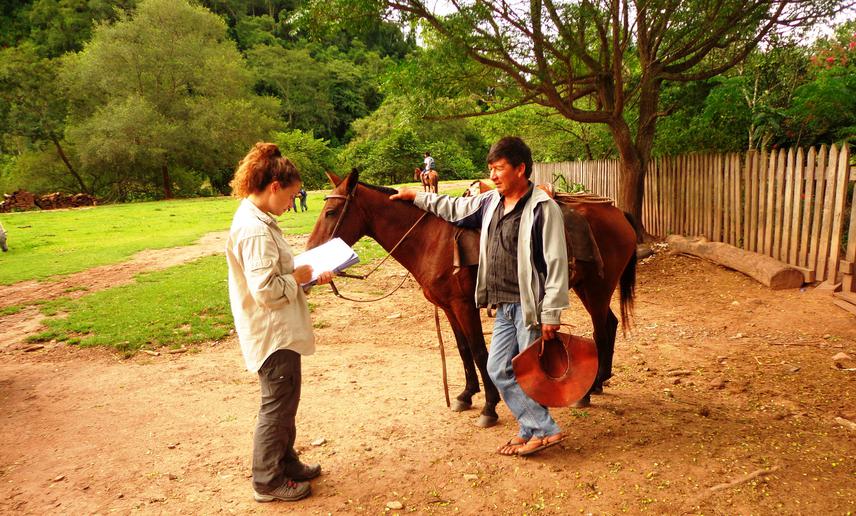María Flavia Caruso
Other projects
22 May 2014
The Impact of Local People’s Attitudes and Perceptions of Protected Areas on the Conservation of Jaguar (Panthera onca) In North-Western Argentina
8 Feb 2019
Availability and Connectivity of Habitat for Jaguar (Panthera onca) between Baritú National Park (Argentina) and Tariquía National Reserve (Bolivia)
18 Oct 2021
Mammal Population Dynamics, Connectivity, Prevention and Control of Transboundary Wildlife Trade in the Yungas
This project aims to improve our understanding of local social attitudes and perceptions in order to enhance the conservation of jaguars and protected areas.

Protected natural areas (ANP) are perceived dual form as areas of opportunity for development and as an "enemy" or regions that limit access to better welfare conditions for the population (Riemann 2011). These areas protect wild places that are samples where the diversity of life and conserving natural resources as well as associated cultural resources (Burkart, 2005).
The edges of protected areas often become hotbeds of human-wildlife (Woodroffe and Ginsberg, 1998) conflict. Large carnivores have suffered episodes of significant reduction in their geographical distribution and high levels of extinction (Purvis et al., 2001), events that continue today (Ginsbert, 2001).
The largest cat in the Americas, the jaguar, after being hunted for their fur and persecuted as a result of conflicts with livestock (Swank and Teer, 1989; Rabinowitz, 1995), currently its distribution has been reduced by 54 % and its habitat is highly fragmented (Perovic, 2002; Altrichter et al, 2006; Di Bitetti et al., 2006a). In order to approach the preservation and conservation of the species we must assume that their causes and solutions are woven into the fabric of modern society implicitly assumes the need to examine the social forces and perception (Kellert et al., 2007).
Recent studies on attitudes and perceptions of people in six locations in the city of Corrientes Argentina to the reintroduction of the jaguar in the Natural Reserve of Ibera unveiled a remarkably positive attitude towards the return of large carnivore (Caruso et al., 2013). According to the discussion in this paper, it appears that because of a management plan carried out in the Reserve of Ibera including villagers, the correntina society would become aware that it is possible to redirect the economy making it compatible with the long-term wildlife without forgetting future generations (Caruso et al., 2010).